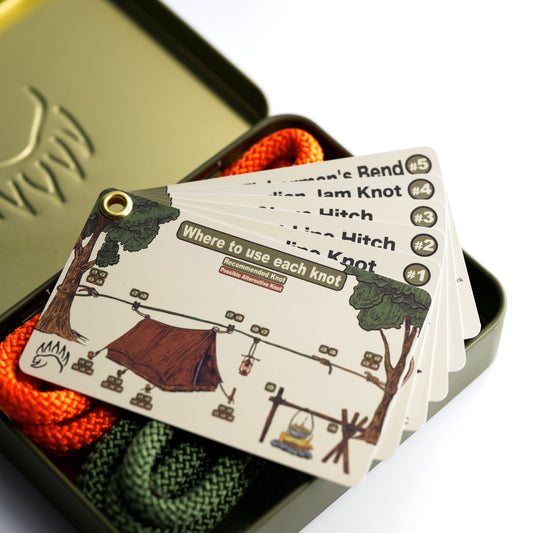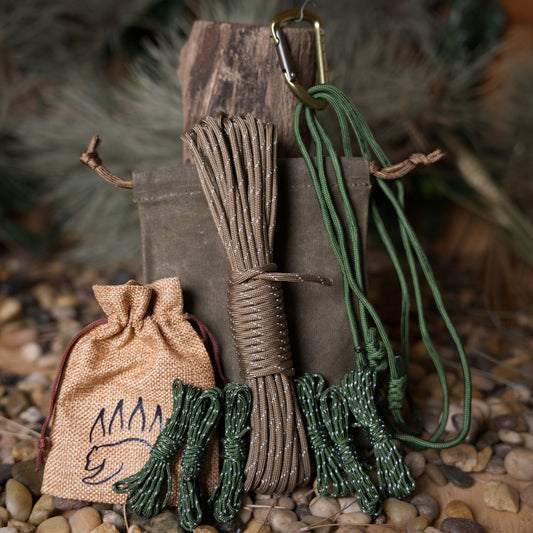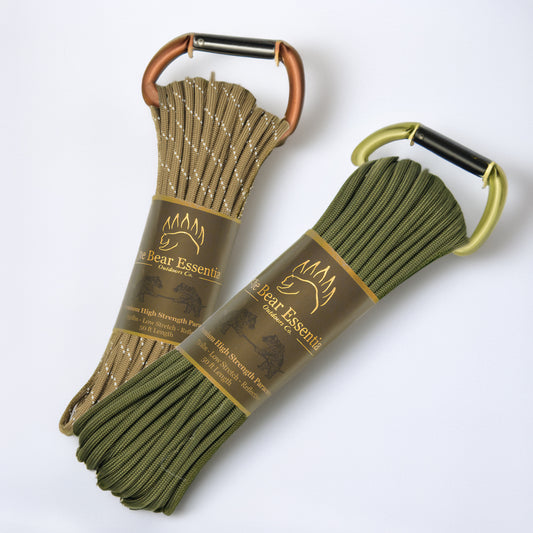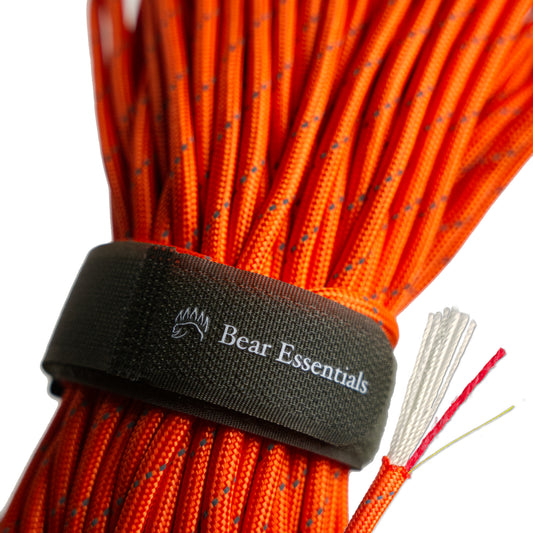How to Tie The Snug Hitch
Usage
The Snug Hitch is a compact friction hitch used to secure a rope to a pole, stake, or another rope, especially in light-duty outdoor or utility settings. It lies flat and tight against the object, making it an excellent choice for guy lines, tarp tie-outs, or securing gear where a low-profile hold is important.
Why Learn the Snug Hitch?
If you need a quick and reliable way to fasten a rope tightly, the Snug Hitch delivers. It is easier to tie than a Rolling Hitch, and while not ideal for dynamic loads, it holds firmly under steady tension. Its minimal bulk and ease of untying make it ideal for bushcraft, camping, and everyday problem-solving.
Common Uses
- Bushcraft: Securing lines to trees or poles for tarp shelters, anchoring gear or bundles in a compact setup.
- Camping: Tying out tent or tarp lines, securing items to stakes or trees without bulk.
- Utility & Everyday Life: Attaching rope to posts or rails for light-duty applications, temporary binding, or securing of gear.
ABOK Number
(Ashley Book of Knots)
Other Names
Category
|
Notable Features
- Compact Structure: Lies flat against the surface.
- Secure Hold Under Tension: Ideal for lengthwise pull.
- Simple to Tie and Untie: No excessive bulk or complexity.
Variations
- Extra Wraps: Add a third turn before the final tuck to improve grip on slippery ropes.
- Slipped Finish: A quick-release version can be formed by passing a bight instead of the tail through the final tuck.
Similar Knots
Clove Hitch
- Pros: Quick to tie.
- Cons: Less secure under variable load.
Timber Hitch
- Pros: Tightens under load and easy to untie.
- Cons: Best for cylindrical loads; not as snug in flat applications.
Round Turn and Two Half Hitches
- Pros: More secure and structured.
- Cons: Bulkier and takes longer to tie.
Magnus Hitch
- Pros: Resists twisting and holds well.
- Cons: Slightly more complex than the Snug Hitch.
Anchor Hitch
- Pros: Extremely secure and reliable.
- Cons: Not as compact or fast to tie.
History
The Snug Hitch has obscure origins, likely evolving from traditional maritime and woodcraft hitches where tight, low-profile knots were needed. While it is not named explicitly in The Ashley Book of Knots, similar compact hitches appear under entries #1674 and #1736, often related to the rolling hitch knot in the Rolling Hitch family.
Knot expert Geoffrey Budworth recognized the Snug Hitch as a distinct knot in The Ultimate Encyclopedia of Knots & Ropework (1999), highlighting its use in boating and camping for its firm hold and minimal footprint.
History Section Citation/Source:
- Ashley, C. W. (1944). The Ashley Book of Knots. Doubleday.
- Budworth, G. (1999). The Ultimate Encyclopedia of Knots & Ropework. Anness Publishing.
Security Level
The Snug Hitch is secure under steady tension but can slip with slick synthetic ropes or dynamic load changes. Always dress the knot carefully and test its security before use.
Downsides
- May Slip on Slick Ropes: Not ideal for nylon or other synthetics.
- Less Secure Under Variable Load: Best under constant tension.
- Limited Recognition: Less standardized in literature or training.
Structure
- Wrap the rope once around the object toward the direction of pull.
- Make a second wrap parallel to the first, keeping them tight.
- Finish with a half-hitch in the opposite direction of the wraps.
- Pull tight and dress the knot so it lies flat and snug.
FAQ
What is the Snug Hitch best used for?
Securing rope to poles, stakes, or spars in bushcraft, camping, or utility contexts.
Is the Snug Hitch strong enough for load-bearing?
No, it's intended for light to moderate loads under constant tension.
How does the Snug Hitch compare to the Rolling Hitch?
The Snug Hitch is simpler and lower-profile, but less effective under dynamic strain.
Can it be tied with slippery rope?
It can, but should be reinforced with extra turns or used with grippier rope.
Important Notes on Safety
The Snug Hitch is not rated for critical load-bearing or life safety use. Always test the knot under load before relying on it, and use more secure alternatives like the Anchor Hitch or Round Turn and Two Half Hitches when higher strength is needed.









